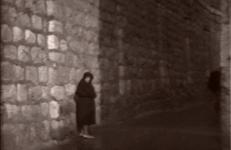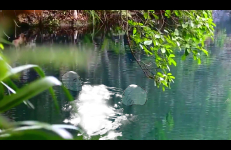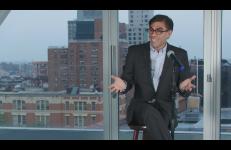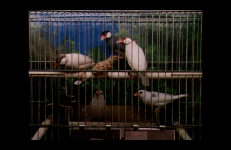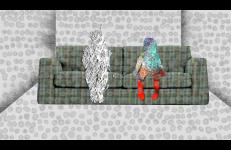Subtitled "The Refusenik", "The Zealot", and "The Father", this video takes us on a journey where Germans, Turks, Israelis, Palestinians, fathers, grandmothers, daughters and animals are together for 13 minutes.
Jewish
"Inside a Lithuanian synagogue, young Domas Darguzs regales the filmmaker with a whispered, wide-eyed account of mythical events, while the film cross-cuts to images of farm-life. Kid brother of an Israeli soldier, Domas's stories are part fantasy, part hopeful ruminations of a courageous, young mind interrupted only by an impatient adult."
— KJ Mohr
A psychedelic portrait of the founding theorist of Christianity.
The story of Paul the Apostle’s life, ideology, and influence is told by piecing together 20th century 16mm and cassette propaganda, board games, animation, reenactments, Roman Empire doom metal and covers of Catholic liturgical music. The gentle Paul themes of flute, acoustic guitar, and mellotron contrast with the Demonic Roman Empire themes of electric guitar, drums and synth. Performance artist Linda Mary Montano and Usama Alshaibi portray Paul on his journey.
Based on a Story explores the widely-publicized encounter between a Jewish Cantor, Michael Weisser, and Nebraska's former Ku Klux Klan Grand Dragon, Larry Trapp. After months of harassment from Trapp by mail, phone and cable TV, the Weisser family befriended Trapp, who then renounced the Klan, moved into the Weisser family's home and converted to Judaism. Trapp, who was a double amputee and blind from childhood diabetes, died in the Weisser's home six months after he moved in.
Based on a Story explores the widely-publicized encounter between a Jewish Cantor, Michael Weisser, and Nebraska's former Ku Klux Klan Grand Dragon, Larry Trapp. After months of harassment from Trapp by mail, phone and cable TV, the Weisser family befriended Trapp, who then renounced the Klan, moved into the Weisser family's home and converted to Judaism. Trapp, who was a double amputee and blind from childhood diabetes, died in the Weisser's home six months after he moved in.
The fragment contains within it an implied reference to something that was once whole. It suggests damage and violence, time and distance. These qualities I found were integral to my own constitution, and it was with the making of Cooperation Of Parts that this became clear.
“Misfortune makes and breaks you.” I have the misfortune of a history of disruptions, and the fortune of having that history to work with.
Dachau 1974 was recorded on Korot’s visit to Dachau, Germany, the site of the former concentration camp, in the Fall of 1974. What she saw when she arrived was a sanitized former prisoner camp that was now a tourist site. Organizing the material she recorded at the camp for a four-channel work based on weaving structures, she created a non-verbal narrative work that moves the viewer from outside the camps walls, into barracks, past crematoria, to a quiet pastoral scene in its final images. This 24-minute work focuses on the architecture that remain
This film uses the ‘old fashioned’ conventions of documentary film practice to stand history on its head. There is a narration taken from a radio lecture by Claude Lévi-Strauss entitled, “The Meeting of Myth and Science,” images from the Deutsche Wochenshau of June 25, 1940 that recorded Hitler’s dawn visit to Paris, images from American newsreels, a movement from one of Beethoven’s Rasumovsky Quartets. The film could only succeed, in my mind, if the imprint of prior usage of all elements was clear.
THE DRESS: is a projection prop created for a performance piece at the Art Institute in 1984. It was installed in March 2021, suspended in front of a building on the Bowery as both a memorial to my grandmother, a Hungarian immigrant and master seamstress, and to the Triangle Shirtwaist Factory fire, of 1911, which occurred a few blocks north of this site.
-EJay Sims
THE DRESS: is a projection prop created for a performance piece at the Art Institute in 1984. It was installed in March 2021, suspended in front of a building on the Bowery as both a memorial to my grandmother, a Hungarian immigrant and master seamstress, and to the Triangle Shirtwaist Factory fire, of 1911, which occurred a few blocks north of this site.
-EJay Sims
Sassy, iconoclastic, and never-married, Los Angeles filmmaker Susan Mogul rides shotgun with ex-lovers, almost lovers, and her Dad, in a road movie turned inside out. Conversations with each driving man - pornographer, tuba player, TV critic, long haul truck driver, and more - are catalysts to reflect upon the past and comment about the present.
At the computer, I cut video threads of wind storms and quaking trees. I create a companion piece for Florence called Etty using the words of a young woman from completely different circumstances who transcends fear and resists terror in the midst of extreme circumstances. Etty Hillesum was a 29 year old Dutch writer we know only from her diaries first published in the early 1980s.
Based on live testimony, historical documents from my Egyptian Jewish family’s archives, and fragments from the renowned Cairo Geniza discovered in the 19th century in the Ben Ezra synagogue in Cairo, which includes documents from the 9th-19th centuries. Fatherland Archives illuminates the vanished world of Egyptian Jewish life and culture.
Nurit Sharett visited the city of Hebron over the course of a year, teaching video art to a group of young Palestinian women. Over time the artist established firm relationships with three of her students and their families. The video documents everyday life in that microcosm, dissimilar to any other city.
This work is almost a parable, where a man is imprisoned under his baby’s bed. He tries all means to survive and to find a mechanical solution that would lead him to freedom.
This title is only available on Radical Closure.
Museum collections of various kinds are the object of artist Dana Levy's ongoing, consistent study in the past decade.
In The Blood is an experimental documentary about American-Jewish attitudes towards Germans, and the role the Holocaust plays in shaping Jewish identity. This layered collage combines appropriated images, original footage, sampled sounds, and fragments of audio conversations, to examine perceptions and representations of Germany, cultural identity, collective memory, and history.
In 1971 the curator Allon Schoerner was commissioned by Hadassah, a Jewish women’s organization, to create an exhibition about Jerusalem for the Jewish Museum in New York City. As part of this endeavor, three artists were sent overseas to document the city: David Cort of the Videofreex, young media artist Shalom Gorewitz, and photographer and light show artist Bob Quinn.
This five-DVD set compiles all the raw footage shot on this journey.
David Cort of the Videofreex travels to Jerusalem. This tape contains raw footage of him as he is taken on a tour through a poor neighborhood by a group of young men. There is talk of the Israeli Black Panther Party, and of drug dealers and poverty. Somebody says the tape is being made for the Jewish Museum in NYC. The Israeli guide talks about the movement, and says the bourgeois and the poor can meet through parties and drugs. They visit a woman and her children who are living in poverty, and interview her about the needs of her family.
During Videofreex member David Cort's travels to Jerusalem, a scene was shot in a hospital where a female patient is having electrodes attached to her body. The cameraman gets on the cot and has the electrodes attached to him as they talk about making a brain feedback machine for use at home. The next scene records the cameraman walking the streets of Jerusalem. People passing by interact with the camera.
In this reinterpretation of the mikveh — a purifying ritual bath performed by Jewish brides about to marry — the filmmaker and his husband’s immersions are disrupted by a government who refuses to recognize their marriage. While the couple is required, again and again, to prove their relationship legally exists, the mikveh they share helps them overcome unforgiving bureaucracies and return to what truly matters.
The Nazi-Loop ponders the horror of the Holocaust and the social diseases that characterized it: ethnocentrism, xenophobia, and anti-semitism. Images and text from Weimar and Nazi Germany are woven into a complex montage, which includes representations of contemporary neo-Nazism and those who oppose it. Also woven in are essays by social thinkers that reflect upon the meaning of the historical horror of the Holocaust. The Nazi-Loop suggests that the obsessive ethnocentrism, xenophobia, and anti-Semitism of past times and places is cyclical and present, here and now.
"Gregg Bordowitz’s 2017 performance lecture Only Idiots Smile features the artist on a stool in the New Museum’s top-floor sky room, riffing on the formation of his identity. At one point, he explains his 'Jewish identity is the template thru which I understand all my other identities… how to appear to others, how we’d like to seem to others,' how others might frame themselves to be seen by us.
A meditation on the elusiveness of Jewish history set against the backdrop of contemporary Poland.
Paternal Rites is a first-person essay film that examines the secret underbelly of a contemporary Jewish American family as they grapple with the aftereffects of physical and sexual abuse on their present-day lives. It is also a groundbreaking film about the nature of trauma and memory itself: the ways in which trauma encrypts in uncanny ways; the function of speech and narrative in the process of decryption; and the role of film and filmmaking in the practice of healing.




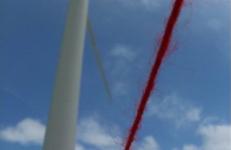
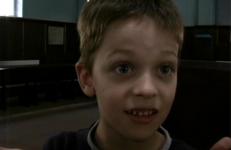
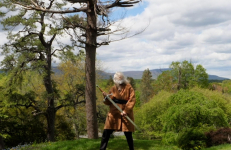
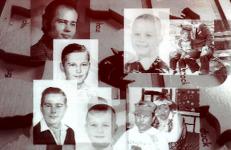
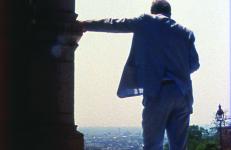
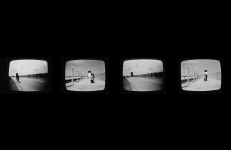
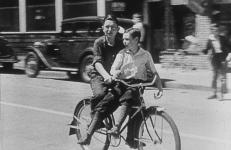
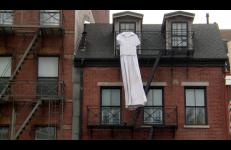
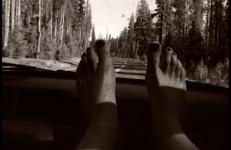
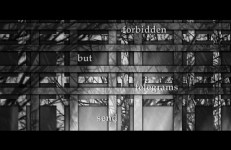
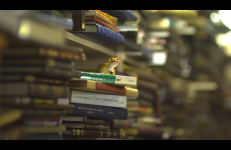
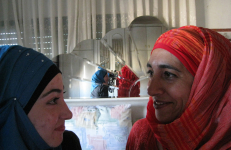
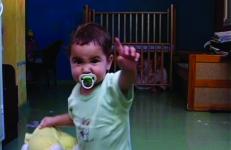
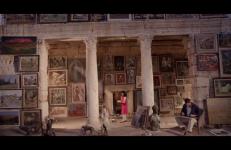
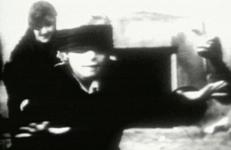
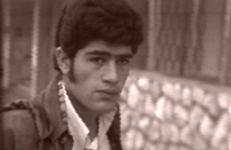
![Videofreex, Jerusalem Tapes: [Israeli] Black Panther on the Street Jerusalem Tapes: [Israeli] Black Panther on the Street](/sites/default/files/styles/215x140/public/images/jerusalemt.jpg?itok=_EmJohyE)
